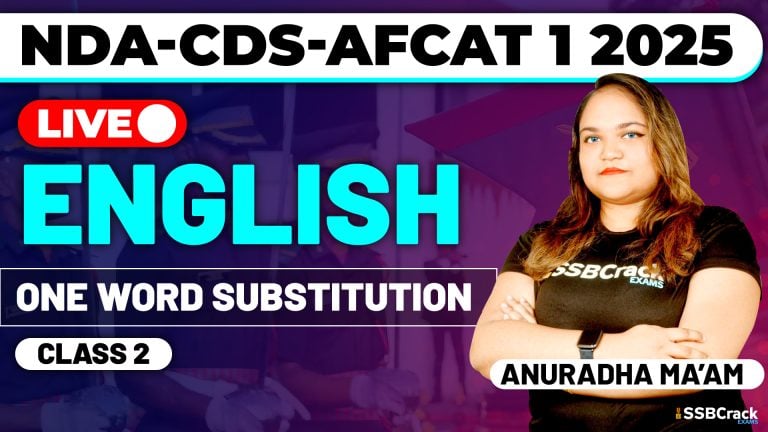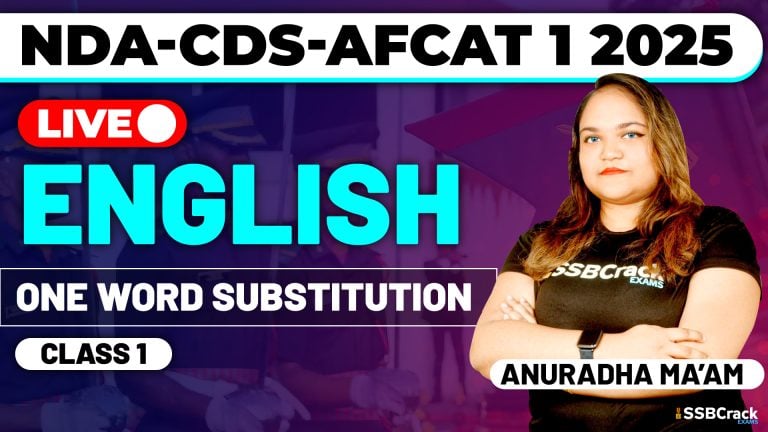AFCAT 1 2017 Written Exam is now just month away, candidates appearing for the exam must be on the peak of their preparations. In this article we will discuss few Golden Tips and Formulas for AFCAT 1 2017 Exam which can come handy in candidates preparation for AFCAT 1 2017 Written Exam.
AFCAT 2017 Online Coaching
Golden Tips and Formulas for AFCAT 1 2017 Entry

- As the time left is very less, revise whatever you have studied, be it the mathematics formula or general awareness. Re-read all the current affairs you prepared. Read whatever material coaching sir or seniors provided to you.
- Read latest magazines, daily newspaper reading can save you in the general knowledge section. Keep yourself updated through these tools.
- Go through all the Previous Year Question Papers complete solutions are not available anywhere so you should solve on your own. This has 2 advantages – you will get to know the pattern and you can practice also.
- Gain more command over the last section of paper. There is a section which generally comes at the end of the paper – one which involves shapes. You can easily score at this section and you also don’t need to practice a lot. Understand the concept and logic behind those questions.
- Read a lot, it will help you in the English section, as this carries maximum weightage and is considered the most deadly among aspirants. There are no specific resources. However, I would recommend reading The Hindu Editorials and Reader’s Digest.
- Read all the mathematical formulae, I would recommend you to go through whatever formulae you have prepared. If not, solve all the questions from past year papers and some difficult ones.
Must Know Formulas for AFCAT Exam
Decimal Fraction:
- A decimal fraction is a fraction in which denominator is an integer power of ten. (The term decimals are commonly used to refer decimal fractions). Generally, a decimal fraction is expressed using decimal notation and its denominator is not mentioned explicitly
Examples: 1/10 = .1 , 1/100 = .01
- Conversion of a Decimal into Common Fraction: Put 1 in the denominator under the decimal point and annex with it as many zeros as is the number of digits after the decimal point. Now, remove the decimal point and reduce the fraction to its lowest terms.
Examples: 0.5 = 5/10=1/2
- Some Basic Formulas:
- (a + b)(a – b) = (a2 – b2)
- (a + b)2 = (a2 + b2 + 2ab)
- (a – b)2 = (a2 + b2 – 2ab)
- (a + b + c)2 = a2 + b2 + c2 + 2(ab + bc + ca)
- (a3 + b3) = (a + b)(a2 – ab + b2)
- (a3 – b3) = (a – b)(a2 + ab + b2)
- (a3 + b3 + c3 – 3abc) = (a + b + c)(a2 + b2 + c2 – ab – bc – ac)
- When a + b + c = 0, then a3 + b3 + c3 = 3abc.
Simplification:
- Rule of ‘BODMAS’: This BODMAS rule depicts the correct sequence in which the operations are to be executed, so as to find out the value of given expression. Full form of BODMAS is B – Bracket, O – of, D – Division, M – Multiplication, A – Addition and S – Subtraction. Thus, while solving or simplifying a problem, first remove all brackets, strictly in the order (), {} and ||. After removing the brackets, we will use the following operations strictly in the following order: (i) of (ii) Division (iii) Multiplication (iv) Addition (v) Subtraction.
Average:
- Average = (Sum of observations/Number of observations)
- Suppose a train covers a certain distance at x kmph and an equal distance at y kmph. Then, the average speed of train during the whole journey is kmph (2xy/x+y)kmph.
Percentage:
- By a certain percent, we mean that many hundredths. Thus, x percent means x hundredths, written as x%. To express x% as a fraction: We have, x% = x/100
- To express a/b as a percent: We have, a/b = (a/b x 100)%
- Percentage Increase/Decrease: If the price of a commodity increases by R%, then the reduction in consumption so as not to increase the expenditure is: [(R/(100+R)) x 100]%. If the price of a commodity decreases by R%, then the increase in consumption so as not to decrease the expenditure is: [(R/(100-R)) x 100]%.
- Result on Population: Let the population of a town be P now and suppose it increases at the rate of R% per annum, then: population after n years = P (1+(R/100))n Population n years ago= P/ (1+(R/100))n
- Result on Depreciation: Let the present value of a machine be P. Suppose it depreciates at the rate of R% per annum. Then: Value of the machine after n years = P (1-(R/100)n , Value of the machine n years ago = P/ (1-(R/100)n, If A is R% more than B, then B is less than A by [(R/(100+R)) x 100] %, If A is R% less than B, then B is more than A by [(R/(100-R)) x 100] %
Ratio:
- The ratio of two quantities a and b in the same units, is the fraction and we write it as a : b. In the ratio a : b, we call a as the first term or antecedent and b, the second term or consequent. Eg. The ratio 5 : 9 represents 5/9 with antecedent = 5, consequent = 9.
- Rule: The multiplication or division of each term of a ratio by the same non-zero number does not affect the ratio. Eg. 4 : 5 = 8 : 10 = 12 : 15. Also, 4 : 6 = 2 : 3.
Proportion:
- The equality of two ratios is called proportion. If a : b = c : d, we write a : b :: c : d and we say that a, b, c, d are in proportion. Here a and d are called extremes, while b and c are called mean terms. Product of means = Product of extremes. Thus, a : b :: c : d (b x c) = (a x d).
Simple Interest:
- Principal: The money borrowed or lent out for a certain period is called the principal or the sum.
- Interest: Extra money paid for using other’s money is called interest.
- Simple Interest (S.I.): If the interest on a sum borrowed for certain period is reckoned uniformly, then it is called simple interest. Let Principal = P, Rate = R% per annum (p.a.) and Time = T years. Then Simple Interest = (P x R x T)/100
Profit and Loss:
- Cost Price: The price, at which an article is purchased, is called its cost price, abbreviated as C.P.
- Selling Price: The price, at which an article is sold, is called its selling prices, abbreviated as S.P.
- Profit or Gain: If S.P. is greater than C.P., the seller is said to have a profit or gain.
- Loss: If S.P. is less than C.P., the seller is said to have incurred a loss.
- Gain = (S.P.) – (C.P.)
- Loss = (C.P.) – (S.P.)
- Loss or gain is always reckoned on C.P.
- Gain Percentage: (Gain %) = (Gain x 100) / C.P.
- Loss Percentage: (Loss %) = (Loss x 100) / C.P.
- Selling Price: (S.P.) = [ ((100 + Gain %)/100) x C.P.]
- Selling Price: (S.P.) = [ ((100 – Loss %)/100) x C.P.]
- Cost Price: (C.P.)= [ (100/(100 + Gain %)) x S.P.]
- Cost Price: (C.P.)= [ (100/(100 – Loss %)) x S.P.]
- If an article is sold at a gain of say 10%, then S.P. = 110% of C.P.
- If an article is sold at a loss of say, 20% then S.P. = 80% of C.P.
- When a person sells two similar items, one at a gain of say x%, and the other at a loss of x%, then the seller always incurs a loss given by: Loss % = (x/10)2
- If a trader professes to sell his goods at cost price, but uses false weights, then Gain % = [(Error/(True Wight – Error)) x 100 ]%
Hope these formulas would help you to solve the afcat exam numerical ability problems. If you think we have missed any formula, do write it in the comment section below. You can also join our afcat exam online coaching to crack afcat exam 2016.



















U missed the formulas of compound interest….pls tell us the tips to do it in easier way..